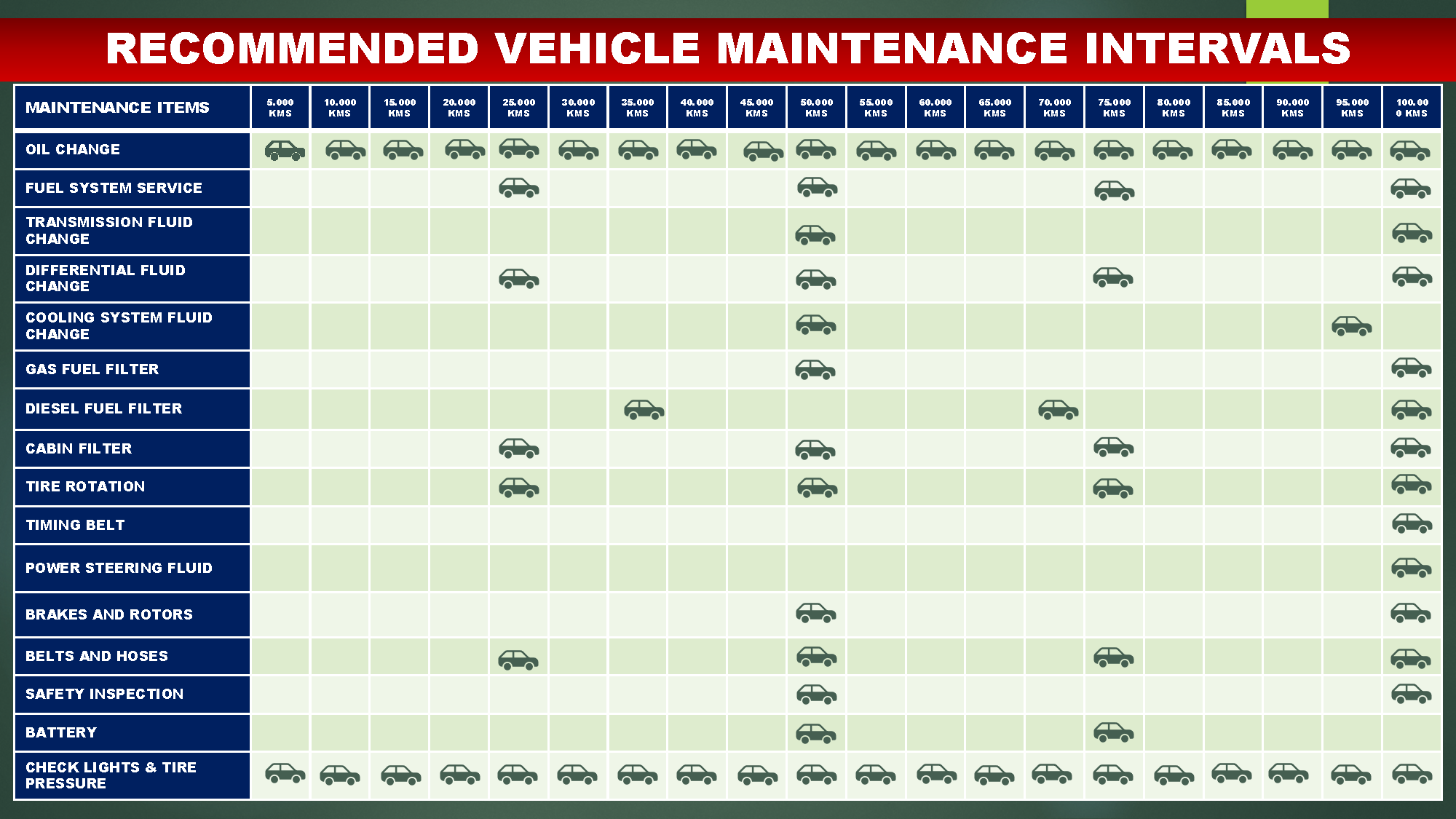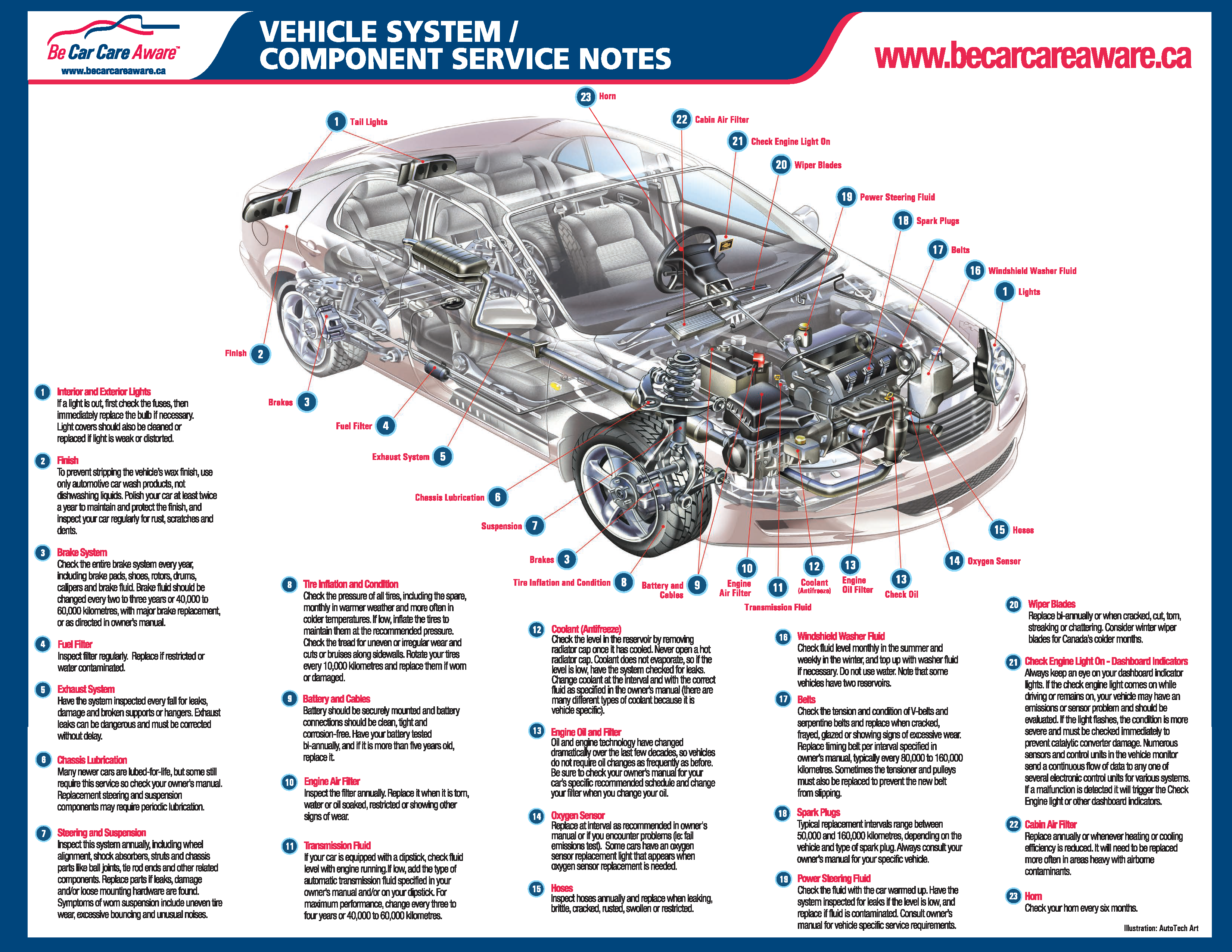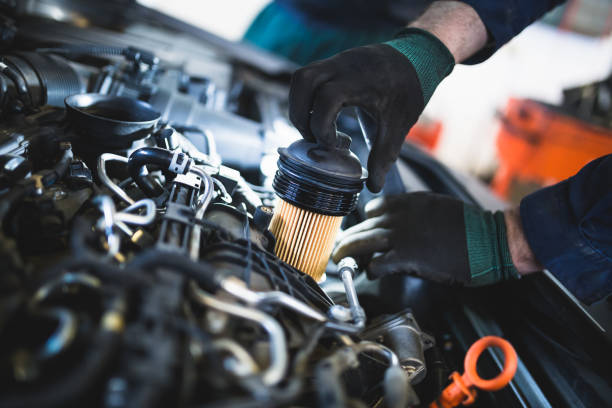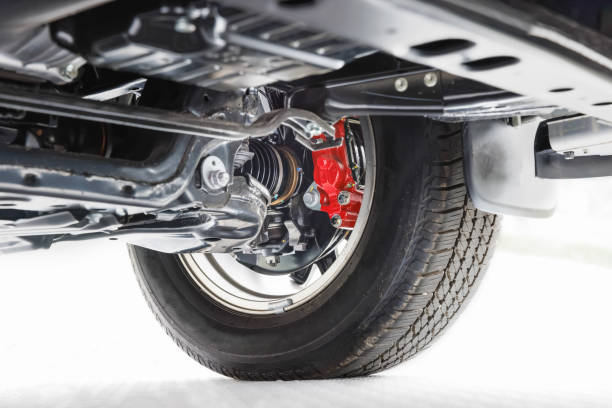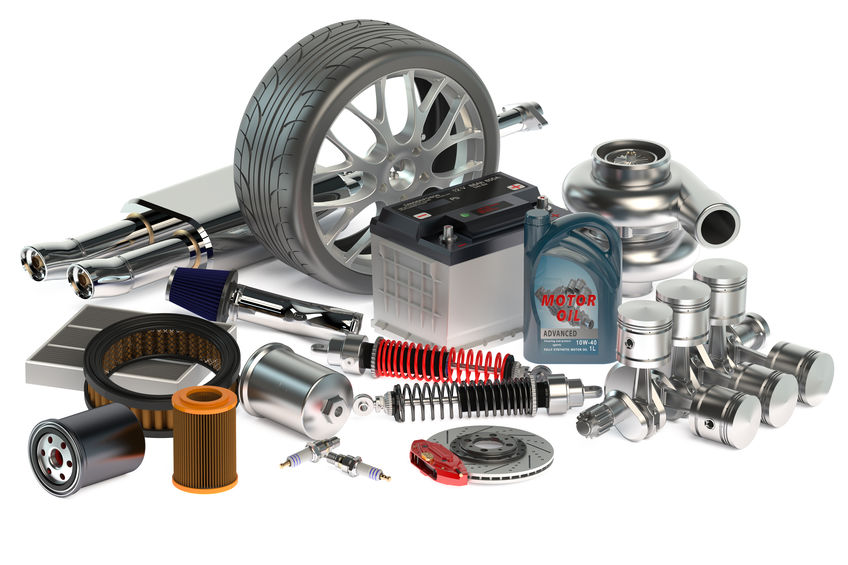
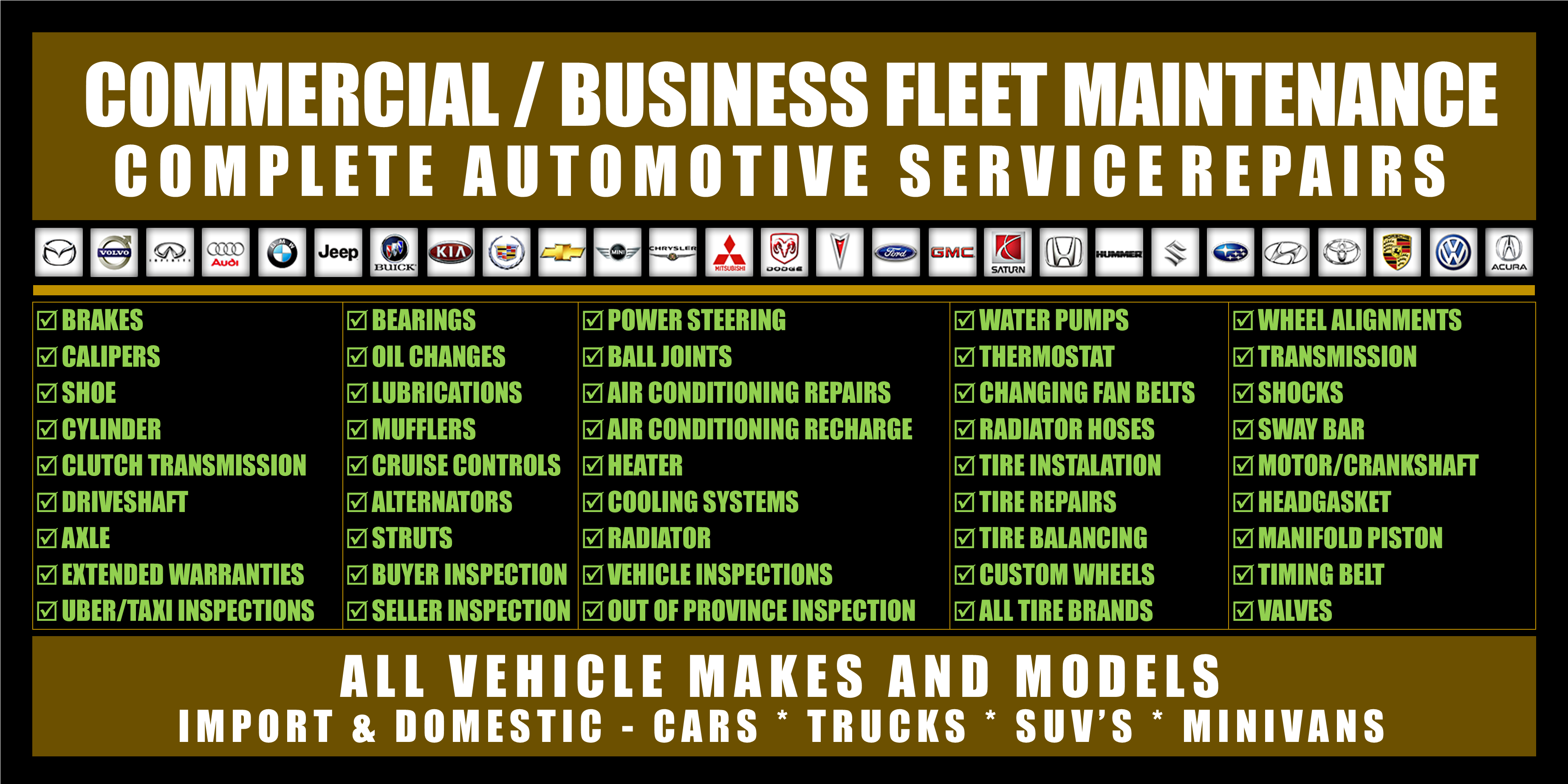
Hours of Operation for All Departments
Auto Sales | Automotive Service Repairs | Tire Services | Vehicle Inspections and Much More.
- Monday – Friday : 9:00am – 5:00pm | Saturday: 9:30am – 4:30pm | Sunday and After Hours: By Appointment.
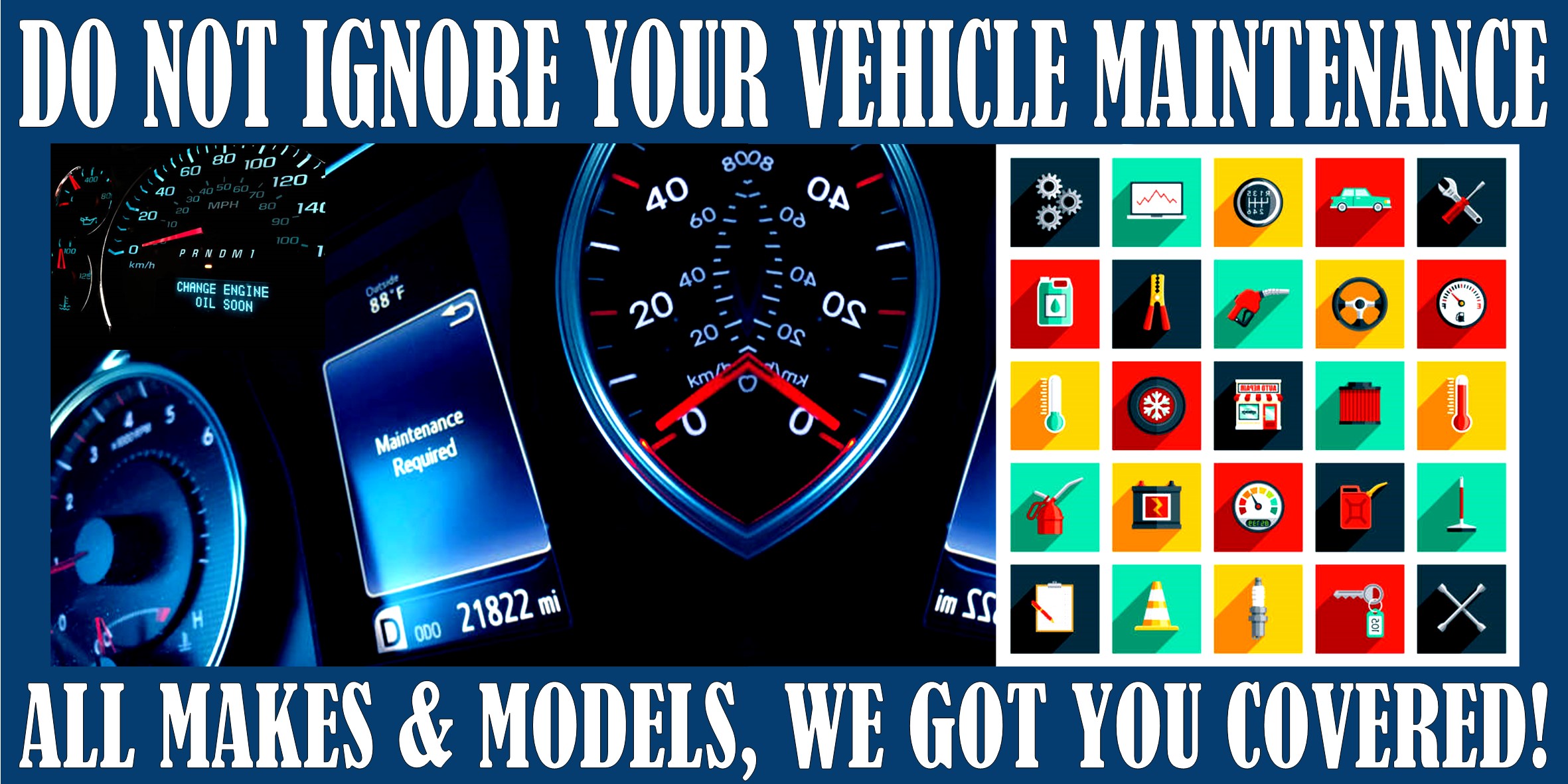
Taking care of your vehicle is important to ensuring your vehicle is safe and reliable.
Scheduling regular maintenance and service checks also reduces both your long and short-term costs, helps maintain your vehicle’s value, and can help protect the environment.
If you are not familiar with your vehicle, its various parts and systems and what servicing is required, then maintaining your vehicle can seem overwhelming. Manufacturer build and design vehicles with scheduled maintenance requirements that are specifically developed to ensure the make and model of your vehicle operates optimally and remains safe and dependable.
April is National Car Care Month, and October is Fall Car Care Month! Why April? In April, as winter comes to an end, it is time to get your car ready for spring driving and summer road trips! It is important to make sure your tires, brakes and windshield wipers are ready for the rain, and take care of any issues that may have occurred or been ignored during winter.
Why October? Winter driving brings its own hazards such as snow and icy roads. To prepare , checking your brakes, tires and heat in the fall is necessary, as the summer months can take their toll on a vehicle.
Vehicle Systems Overview
Service interval schedule with general guidelines for the regular maintenance of passenger cars, mini vans, pickups, and SUVs. Below is a breakdown of the vehicle systems that require regular maintenance.
Batteries
What is it?
Your car’s starting and charging systems, and the battery, help ensure dependable vehicle operation whenever you drive your car and in all sorts of driving conditions. Make sure to check these systems regularly.
What does it do?
The battery stores electrical energy and the starter converts that energy into mechanical force to turn the engine for starting. The alternator produces electric current to replace what the starter used during start-up and to support electrical loads when the engine is running. An ignition module turns the low-voltage supply to the ignition coil on and off, and the coil produces the high voltage for the ignition system. This creates a spark at the spark plugs and ignites the air/fuel mixture in the engine. A belt transmits power from the front of the engine to the alternator’s pulley, along with other accessories.
Typical Wear and Tear
Driving habits such as frequent engine on/off cycles will cause more wear on the starter than a simple trip back and forth to work. Other factors include:
- Driving and weather conditions
- Mileage
- Vehicle age
- Excessive electrical draws like in-vehicle entertainment systems
Symptoms
- Headlights and interior lights dim.
- “Check Engine” and/or battery light may come on.
- Accessories fail to operate.
Belts & Hoses
What is it?
Your car’s belts and hoses are essential to the cooling, air conditioning and charging systems, and the engine. Don’t take these routine replacement intervals for granted because they can break down and leave you stranded.
What does it do?
The timing belt keeps the crankshaft and camshaft mechanically synchronized to maintain engine timing. Whether serpentine, V-belt, or fan belt (the belts on the outside of the engine), they all transmit power from the front of the engine to accessories that need to be driven, such as the air conditioning, the charging system, and fans. Radiator and heater hoses carry coolant to and from the engine, radiator, and heater core.
Typical Wear and Tear
Key items that affect the replacement interval for belts and hoses:
- Vehicle age
- Electrolytic corrosion
- Mileage
- Oil contamination
- Belt tension
- Failed hose clamps
Symptoms
- Squeaking noise from under the hood during start-up or operation
- Coolant leaks
- Dashboard light will illuminate.
- A/C System may fail.
- Engine overheating
- Smell of burnt rubber.
Brake Systems
What is it? Your car’s brake system is its most critical safety system, and you should check it immediately if you suspect any problems. A properly operating brake system helps ensure safe vehicle control and operation under a wide variety of conditions. What does it do? When you push the brake pedal, the force generates hydraulic pressure in the master cylinder. This pressure flows through the hydraulic lines and hoses to the wheel cylinders and calipers, forcing the shoes against the drums (drum brakes) and the pads against the rotors (disc brakes). The resulting friction slows the vehicle and is relative to the amount of force applied at the brake pedal. Typical Wear and Tear Brakes are a normal wear item for any car and eventually they’re going to need replacement. Avoid letting your brakes get to the “metal-to-metal” point, which usually means expensive rotor or drum replacement. Factors that affect wear include driving habits and quality of brake pads and shoes. Symptoms
- Squeaking noise from under the hood during start-up or operation
- Coolant leaks
- Dashboard light will illuminate.
- A/C System may fail.
- Engine overheating
- Smell of burnt rubber.
Emission System
What is it?
Your car’s emission system keeps the engine running cleanly and efficiently in all sorts of operating conditions. A steady or flashing warning light on your vehicle dashboard indicates a problem that is currently happening and may require immediate attention. Failure to do so can reduce your gas mileage or cause your vehicle to pollute.
What does it do?
Your car’s emission system controls the emissions, exhaust, and pollutants (including gasoline vapors escaping from the fuel tank), using an array of sensors, computerized engine controls and the exhaust components. The emission system substantially reduces harmful gases such as carbon monoxide (CO), unburned hydrocarbons (HC) and oxides of nitrogen (NOx) and, by law, must be maintained in operating condition.
Typical Wear and Tear
Some factors affecting the emission system include:
- Driving and atmospheric conditions
- Mileage
- Vehicle age
- Type of spark plug electrode material.
- Poor vehicle maintenance
- Poor quality fuel
- Damaged or worn sensors.
- Dry-rotted or cracked vacuum hoses.
Filters & Fluids
What is it?
Your car’s filters are important to the longevity of your car and interior comfort. Maximize your car investment by replacing filters regularly.
What does it do?
The oil filter traps contaminants, allowing the oil to flow through the engine unrestricted. The fuel filter separates harmful contaminants that may cause problems with carburetors or intricate fuel injectors. The air filter traps dirt particles, which can cause damage to engine cylinders, walls, pistons, and piston rings. The air filter also plays a role in keeping contaminants off the airflow sensor (in fuel-injected cars). The cabin filter helps trap pollen, bacteria and dust that may find their way into a car’s ventilation system.
Typical Wear and Tear
Filters are normal wear items that require regular checks and replacement. Factors that affect replacement intervals include:
- Mileage
- Driving habits
- Driving and road conditions
- Type of filter
- Vehicle type
Symptoms
- Poor gas mileage
- Hesitation while accelerating
- Musty odor in the cabin
Fuel System
What is it?
Your car’s fuel system works with the rest of the engine control system to deliver the best performance with the lowest emissions. Check your car’s fuel system regularly or immediately if you smell gas or suspect a problem.
What does it do?
The fuel system transfers fuel from the fuel tank and passes it through a fuel filter for straining before it arrives at the injectors. A pressure regulator controls fuel pressure to ensure good engine performance under a variety of speed and load conditions. Fuel injectors, when activated, spray a metered amount of fuel into the engine. Some vehicles use a return line system to return unused fuel back to the tank.
Typical Wear and Tear
Intervals for fuel system maintenance may be influenced by:
- Fuel quality
- Vehicle age
- Mileage/time
- Operating conditions
- Maintenance history
Symptoms
- Poor fuel economy
- Vehicle won’t start.
- “Check Engine” light is illuminated.
Engine cooling System
What is it?
The engine cooling system affects your car’s overall dependability and engine longevity. Cooling systems have advanced over the years with new coolant formulations and new radiator designs and materials. If you suspect a problem with your cooling system, you should check it immediately.
What does it do?
The key parts of the cooling system remove heat from the engine and automatic transmission and dissipate heat to the air outside. The water pump circulates coolant through the engine. The coolant absorbs heat and returns it to the radiator where heat is dissipated. The thermostat regulates the coolant temperature to keep it consistent for efficient engine operation.
Typical Wear and Tear
Factors that affect the replacement of cooling system parts include:
- Driving habits
- Operating conditions
- Type of vehicle
- Type of coolant
- Frequency of regular maintenance such as coolant changes
Symptoms
- Overheating
- Sweet smell
- Leaks
- Repeatedly need to add fluid.
Exhaust System
What is it?
Your car’s exhaust system has come a long way from the old days of exhaust pipes and mufflers. Today, the exhaust system is safety and emissions control rolled into one. Have your car’s exhaust system inspected regularly and check it immediately if you suspect any problems.
What does it do?
The exhaust system routes dangerous exhaust gas from the engine out and away from the car to keep from affecting the occupants. Next, the exhaust system reduces exhaust noise from the engine. The catalytic converter reduces the level of harmful pollutants in the exhaust. The oxygen sensors mounted in the exhaust system monitor the level of oxygen in the exhaust gases to maintain efficient engine operation and to monitor the converter’s operation.
Typical Wear and Tear
Maintain a safe car with regular exhaust system checks. Factors that affect replacement requirements include:
- Driving habits (short trips take their toll on exhaust system life)
- Road conditions (salt, road spray, bumps)
- Vehicle type
- Age of exhaust system parts
Symptoms
- Loud noise
- Rattling noise when starting, accelerating, or braking.
- Drowsiness while driving
- Rotten eggs smell
Lighting & Wipers
What is it?
Lights and wipers play a major role in safe driving – the chances for accidents increase if you can’t see or be seen. Some states have laws that require the headlights to be on with the wipers. If you detect any problems with your car’s lights or wipers, have them checked out at once.
What does it do?
The wiper system keeps excessive water, snow, or dirt from building up on the windshield and removes them to maintain clear visibility through the windshield. The lighting system provides nighttime visibility, signals and alerts other drivers, and supplies light for viewing instruments and the vehicle’s interior.
Typical Wear and Tear
Lights and wipers are normal wear items that require periodic replacement. Factors affecting replacement intervals include:
- Operating conditions (winter conditions are tough on wiper blades)
- Frequency of use
- Material and type of lights and wipers
- Sunny weather – wiper blades can deteriorate faster and need more frequent replacement in desert states.
Symptoms
- Chattering or streaking wiper
- Rapid signal blinking
- Dimming lights
Steering & Suspension
What is it?
The steering and suspension systems are key safety-related systems that largely determine your car’s ride and handling. Have these systems checked regularly, at least once a year and usually with a wheel alignment.
What does it do?
The suspension maintains the relationship between the wheels and the frame or unibody. The suspension system interacts with the steering system to provide vehicle control. When working properly, the suspension system helps absorb the energy from road irregularities such as potholes and helps to maintain vehicle stability. The steering system transmits your input from the steering wheel to the steering gear and other steering components to control the car’s direction.
Typical Wear and Tear
Over time, steering and suspension components wear out and require replacement. Regular checks are critical to maintain a safe car. Factors that affect wear include:
- Driving habits
- Operating conditions (potholes in road)
- Vehicle type
- Type of steering and suspension system
- Frequency of regular maintenance such as chassis lubrication and wheel alignment
Symptoms
- Car pulls to one side.
- Uneven tire wear
- Excessive noise, vibration or bouncing.
- Loss of control
Transmission
What is it?
The transmission works with the engine to provide power to your car’s wheels. Whether automatic or manual, the transmission plays a major role in the overall performance of your car. Make sure to check it at the first sign of problems.
What does it do?
A transmission/transaxle keeps the engine’s output optimally matched to the speed and load conditions. The torque converter, connected to the automatic transmission/transaxle input shaft, connects, multiplies, and interrupts the flow of engine torque into the transmission. Universal and/or Constant Velocity (CV) joints connect to the driveshaft to transmit output power from the transmission to the rear axle on rear-wheel-drive cars and the front axle on front-wheel-drive cars. These joints also allow the driveshaft and/or CV shaft to work at an angle. The several different types of automatic transmission fluid serve multiple purposes cleans, cools, lubricates, transmits force, transmits pressure, inhibits varnish buildup, and continually protects the transmission.
Typical Wear and Tear
Wear and tear on the transmission can be influenced by:
- Driving habits
- Towing or excessive loads
- Operating conditions
- Condition of the transmission fluid
- Frequency of regular maintenance
Symptoms
- Slipping
- Hesitation
- Bucking
- Grinding gears
- Difficulty shifting
Vehicle Inspections
Canadian Auto/Napa Auto Care Centre in St Albert, AB. Is Licensed Vehicle inspection facility by Alberta Transportation Specializing in; OPI – Out of province inspections, CVIP – Commercial vehicle inspections, Skip / DoorDash / Uber / Taxi Vehicle Inspection, AMVIC Inspections, Warranty Inspection, Insurance Inspections, Buyer/Seller inspections, Safety Inspections on Commercial Bus, Light Duty Trucks, School Bus, Light Motorhome, and all makes and models of import and domestic vehicles.
